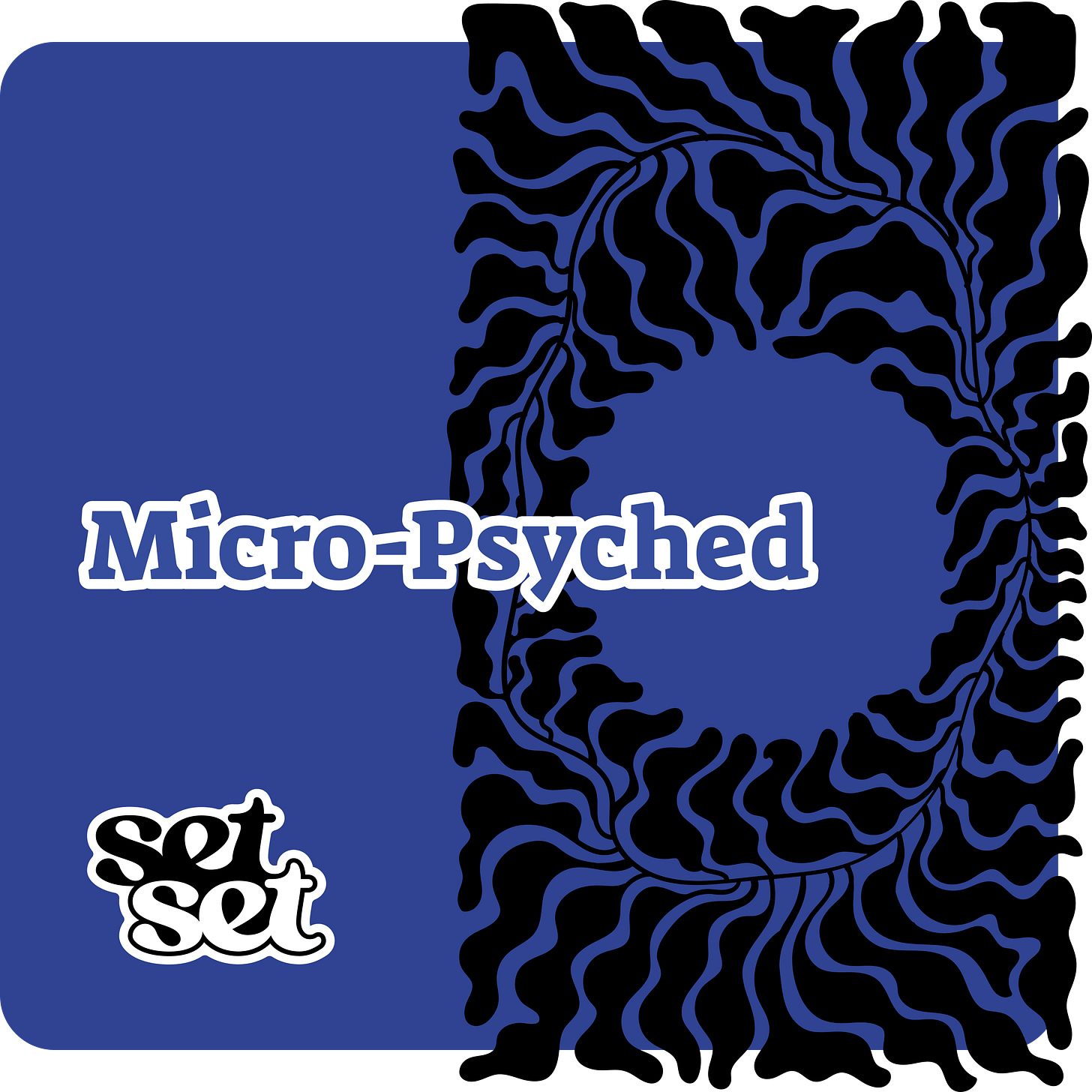Q: Why does a 2.5mg THC beverage hit me so hard?
Q&A about psychedelics and cannabis from really curious real people. Every Friday.
This is SetSet’s Friday Q&A, a deep dive into your real-life cannabis and psychedelics questions. I am not a medical or scientific expert — I’m sharing insights based on my decade in emerging regulated markets, industry conversations, and expert sources.
Q: Can anyone explain to me, scientifically, why 2.5mg of an infused beverage makes me very stoned compared to a higher dose of a vape / edible / other form factors?
The origin of today’s question is a LinkedIn post conveying a typical curiosity, yet as hemp-derived THC - or D9 - beverages are increasingly available for purchase at mainstream retailers, it’s taking on greater resonance. In response to the question posed by the LinkedIn member, commenters were mainly correct in their attempts to help make sense for this (off-the-clock, ofc) so stoned drinker. Also, I knew a science-based answer, as requested, required more rigor.
Since I began educating consumers on cannabis in 2015, I’ve learned that providing more detailed information isn’t about being a “know-it-all.” It’s about setting people up for their best time possible because with more good times and fewer “adverse experiences,” consumers and the burgeoning industry can thrive under an umbrella of safety and best practices. Let’s dig into this question!
First, not all milligrams are absorbed the same way. Nanoemulsified THC, common in beverages, is designed to increase bioavailability, meaning more THC gets into your bloodstream faster. Unlike a gummy that passes through your liver and transforms into the longer-lasting but slower 11-hydroxy-THC, nano beverages can partly bypass that process, hitting your system in as little as 10–20 minutes. (I often suggest sucking on a gummy rather than chewing and swallowing to metabolize the active ingredients with greater efficacy more quickly.)
That fast onset creates a sharp spike in blood THC levels, which can feel stronger even if the total dose is lower. Meanwhile, vape tolerance is often higher in regular users, and your body clears inhaled THC relatively quickly, so the subjective high may not match the numeric dose.
From the conversation happening in the comments related to the post, here are the key points that surfaced(summarized anonymously) — and what the science says:
Should THC drinks in bars exceed 5mg? Lower doses protect newer or casual consumers from getting overwhelmed, especially since nanoformulations hit fast and hard.
But what about people with high tolerance who want stronger drinks? Valid point, but public health rules often prioritize safety for the broadest audience — just like alcohol proofs and serving sizes.
Some report that 10mg beverages feel intense. That aligns with what we know about rapid-absorbing nano-THC delivering a more potent experience.
Variables like product inputs, processing, and what’s in your stomach matter. Absolutely — your diet, metabolism, and even gut health can affect absorption.
Do beverages need more THC to match edibles? Actually, no — nanoemulsions often make beverages more efficient, not less.
Isn’t liver metabolism (first-pass effect) enhancing THC potency? Yes, for traditional edibles, but nano-THC bypasses some of that, explaining why the effects feel different.
Is this like how alcohol feels different across drinks? Good analogy — formulation and delivery matter.
Is inconsistent dosing a concern? Yes! Especially in hemp-derived products where testing isn’t federally required, so it’s crucial to check COAs. (Certificates of Analysis)
Does nano-THC increase absorption or receptor activity? Yes, it absorbs faster and may amplify how cannabinoids interact with your system.
What’s the difference between delta-9 and 11-hydroxy THC? With beverages, you’re getting direct delta-9 action, faster, unlike the slower, more potent metabolite from edibles.
What’s your experience with THC and different consumption methods? Join the chat!
Final Takeaway: It’s not just the number on the label. How the product is formulated, how it enters your body, and how you uniquely process it all shape your experience. And while the emerging hemp-THC beverage space is exciting, we need to stay informed and cautious — especially because this category is still finding its regulatory footing.
Want to geek out more? Check out Chemist Harold Han’s posts and the Vertosa blog for deep dives into cannabinoid infusion science. Always look for COAs (Certificates of Analysis) where possible, especially when exploring hemp-derived products, which aren’t always regulated for potency.
Please comment if anything I’ve written needs to be corrected or further explained, and I’ll happily give credit where it’s due! Have a question for next Friday's Q&A? Drop it in the comments or reply here!
Take care,
April









